How Do Horn Speakers Get Their Gorgeous Life-like Tonality?
- Thread starter caesar
- Start date
You are using an out of date browser. It may not display this or other websites correctly.
You should upgrade or use an alternative browser.
You should upgrade or use an alternative browser.
Hi Caesar,
A few of my thoughts on the matter of horn systems and tone:
> Due to their efficiency (and sensitivity) horn speakers have the potential to deliver less distortion than other topologies - this is obviously helpful if one is trying to reach the ultimate fidelity to source - tone being one of those facets.
> Horn speakers again due to their efficiency are most often driven with low power triode amplifiers with distortion characteristics more friendly to our brain’s neural programming - this often manifests as an authenticity of tonal characteristics more semblant of reality than some other speaker / amp combos.
> Often horn lovers favour native analogue sources for playback (vinyl for the most part) and imho the tone conferred through this medium is unparalleled.
> There are favoured materials for cones, diaphragms and magnets. Many believe the tonal qualities of Alnico magnets are very much worth acquiring (I tend to agree but there are obviously anomalies such as field coils and other clever magnet implementations). The paper drivers used in Lowther, AER, Voxativ etc have a tonal characteristic that imho tends to replicate reality more so than some of the man made drivers using synthetic cones of plastic/carbon/etc. Often horn implementations can deliberately exploit tonal characteristics of the cabinet rather than “fighting” it. I find that tone woods are often useful for getting to the authentic tone - Shun Mook is a nice example but so are the thin walled tone wood speakers not made obviously from aluminium or mdf or carbon fibre.
Best regards.
A few of my thoughts on the matter of horn systems and tone:
> Due to their efficiency (and sensitivity) horn speakers have the potential to deliver less distortion than other topologies - this is obviously helpful if one is trying to reach the ultimate fidelity to source - tone being one of those facets.
> Horn speakers again due to their efficiency are most often driven with low power triode amplifiers with distortion characteristics more friendly to our brain’s neural programming - this often manifests as an authenticity of tonal characteristics more semblant of reality than some other speaker / amp combos.
> Often horn lovers favour native analogue sources for playback (vinyl for the most part) and imho the tone conferred through this medium is unparalleled.
> There are favoured materials for cones, diaphragms and magnets. Many believe the tonal qualities of Alnico magnets are very much worth acquiring (I tend to agree but there are obviously anomalies such as field coils and other clever magnet implementations). The paper drivers used in Lowther, AER, Voxativ etc have a tonal characteristic that imho tends to replicate reality more so than some of the man made drivers using synthetic cones of plastic/carbon/etc. Often horn implementations can deliberately exploit tonal characteristics of the cabinet rather than “fighting” it. I find that tone woods are often useful for getting to the authentic tone - Shun Mook is a nice example but so are the thin walled tone wood speakers not made obviously from aluminium or mdf or carbon fibre.
Best regards.
As above, euphonic colorations and self fulfilling expectations.
But when it comes to real world horn speakers, there are the good, the bad and the ugly.
But when it comes to real world horn speakers, there are the good, the bad and the ugly.
> Horn speakers again due to their efficiency are most often driven with low power triode amplifiers with distortion characteristics more friendly to our brain’s neural programming - this often manifests as an authenticity of tonal characteristics more semblant of reality than some other speaker / amp combos.
Most measurements are taken from the amp's output... but that's not what we listen to. We listen to the amp interacting with the speakers. So I captured the output of my speakers being driven with 3 different amplifiers with a measurement mic (1 kHz reading 83dB at mic, mic 2m from mid cone), and here's what I found:
100 Hz Signal
First Watt F5 (class A, PP, SS)
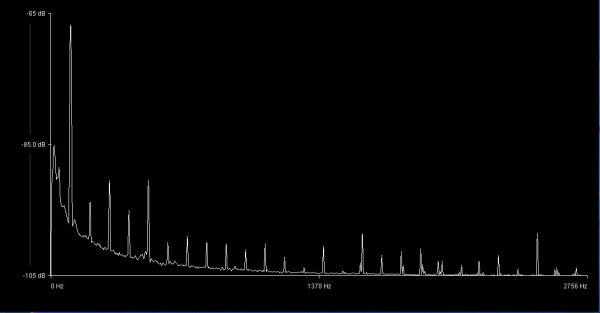
Gainclone (class AB, SS)
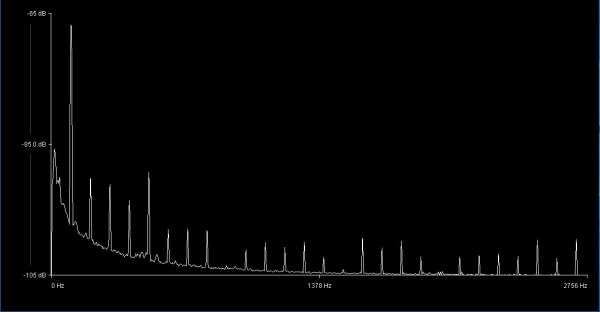
Thoress 300B (SET)
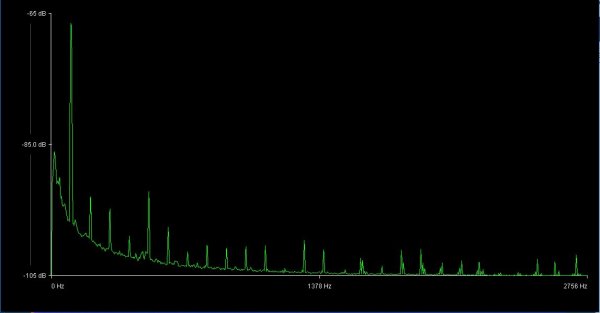
3 kHz Signal
First Watt F5
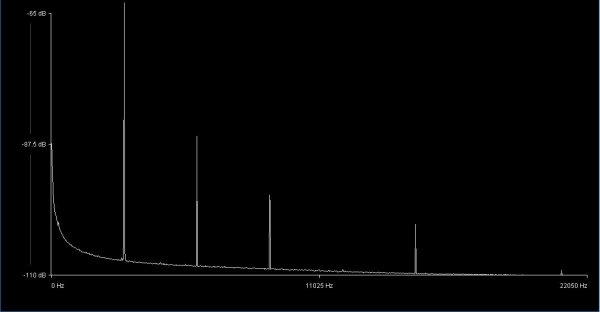
Gainclone
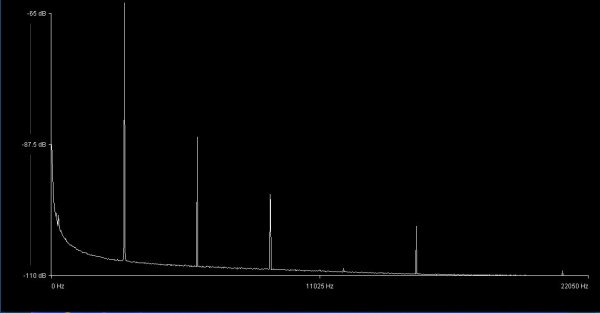
Thoress
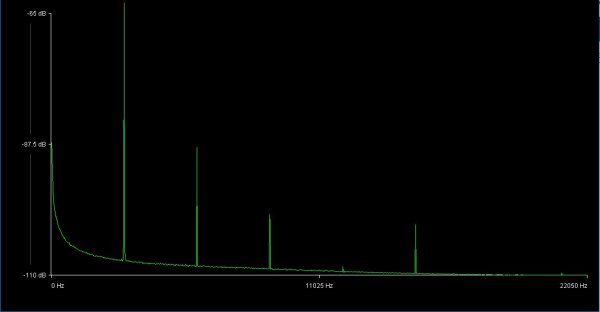
10 kHz Signal
First Watt
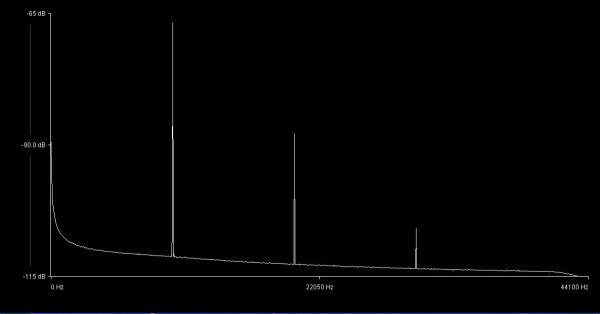
Gainclone
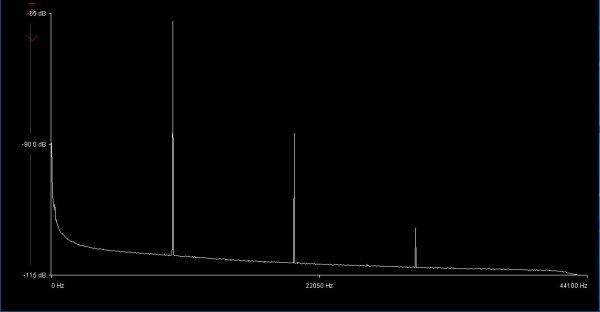
Thoress
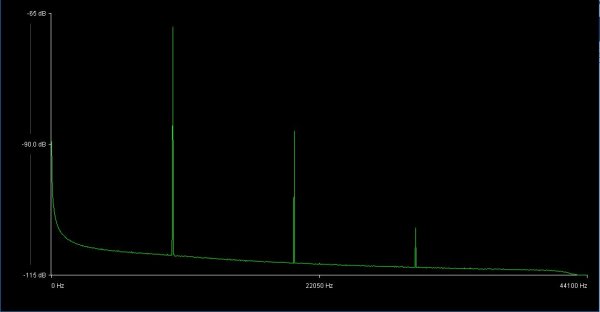
Whatever causes the euphonic sound of SET amps, it seems not to be an increase in harmonic distortion.
Mani.
Hi Mani,
Interesting graphs indeed. Would be interesting to use also conduct the test with a high power solid state amp from the usual suspects and also a class D amp. Also I am not sure that test tones played like that tell the whole story as music being played poses very different demands on amplifiers than test tones and possibly we might see differences in that context.
Btw - is this into your Animas? Useful just for context.
Interesting graphs indeed. Would be interesting to use also conduct the test with a high power solid state amp from the usual suspects and also a class D amp. Also I am not sure that test tones played like that tell the whole story as music being played poses very different demands on amplifiers than test tones and possibly we might see differences in that context.
Btw - is this into your Animas? Useful just for context.
Hi Bill,
Sure, but I used what I had to hand. BTW, the amp powers into 8 Ohms are as follows:
- First Watt ~25wpc
- Gainclone (bridged-parallel) ~200wpc
- Thoress ~8wpc
Yes, the 3 amps sound totally different to each other.
Yes, the Animas... my 'end-game' speakers .
.
Mani.
Would be interesting to use also conduct the test with a high power solid state amp from the usual suspects and also a class D amp.
Sure, but I used what I had to hand. BTW, the amp powers into 8 Ohms are as follows:
- First Watt ~25wpc
- Gainclone (bridged-parallel) ~200wpc
- Thoress ~8wpc
Also I am not sure that test tones played like that tell the whole story as music being played poses very different demands on amplifiers than test tones and possibly we might see differences in that context.
Yes, the 3 amps sound totally different to each other.
Btw - is this into your Animas? Useful just for context.
Yes, the Animas... my 'end-game' speakers
Mani.
Indeed, the Thoress even seems to be somewhat lower in level for higher harmonics at 1khz with some closer to the noise floor. I might be able to make a similar measurement if I can dig my old computer out that had good measurement software (it had FFT and wave generator functions through a good sound card).Most measurements are taken from the amp's output... but that's not what we listen to. We listen to the amp interacting with the speakers. So I captured the output of my speakers being driven with 3 different amplifiers with a measurement mic (1 kHz reading 83dB at mic, mic 2m from mid cone), and here's what I found:
100 Hz Signal
First Watt F5 (class A, PP, SS)
View attachment 45634
Gainclone (class AB, SS)
View attachment 45635
Thoress 300B (SET)
View attachment 45636
3 kHz Signal
First Watt F5
View attachment 45637
Gainclone
View attachment 45638
Thoress
View attachment 45639
10 kHz Signal
First Watt
View attachment 45640
Gainclone
View attachment 45641
Thoress
View attachment 45642
Whatever causes the euphonic sound of SET amps, it seems not to be an increase in harmonic distortion.
Mani.
Sorry, meant 100Hz not 1Khz.Indeed, the Thoress even seems to be somewhat lower in level for higher harmonics at 1khz with some closer to the noise floor. I might be able to make a similar measurement if I can dig my old computer out that had good measurement software (it had FFT and wave generator functions through a good sound card).
Indeed, the Thoress even seems to be somewhat lower in level for higher harmonics at [100 Hz] with some closer to the noise floor.
Interesting, isn't it?
And BTW, the test tones were pretty loud when I took the captures. I mean, you wouldn't have wanted to spend too much time in the room for the 3 minutes that each of them played, so it's not as though the amps weren't being challenged. As I said, the 1 kHz calibration tone was registering 83dB on the SPL meter 2m from the speakers, which is pretty loud.
Mani.
Well, your speakers are so sensitive that it was probably just some mW of power. That said, there were papers published by Matti Otala that demonstrated that amps are more affected by speakers when the amplifier has global negative feedback because the back EMF of the speaker is pushing distorted sound back into the amplifier through the feedback loop. This cannot happen when there is no feedback loop. Now, for sure the gainclone has global feedback but I don't know if the F5 uses any or not. That is only a possible reason of course...the other is that 300B amps producing mW will have very low distortion...quite possibly inherently lower than the transistor amps at the same powerInteresting, isn't it?
And BTW, the test tones were pretty loud when I took the captures. I mean, you wouldn't have wanted to spend too much time in the room for the 3 minutes that each of them played, so it's not as though the amps weren't being challenged. As I said, the 1 kHz calibration tone was registering 83dB on the SPL meter, which is pretty loud.
Mani.
Tonality is usually the problem with horns, not the benefit...
May I answer a different question?
If my primary musical interest were jazz I am 100% certain I would get a horn loudspeaker system, either a Viva Audio Master Horn, a Cessaro Zeta or a Tuna Audio Avaton.
This is because I think there is something about the way a horn reproduces the sound of brass instruments like trumpet and French horn and tuba which is consonant with the way those instruments themselves generate sound.
If my primary musical interest were jazz I am 100% certain I would get a horn loudspeaker system, either a Viva Audio Master Horn, a Cessaro Zeta or a Tuna Audio Avaton.
This is because I think there is something about the way a horn reproduces the sound of brass instruments like trumpet and French horn and tuba which is consonant with the way those instruments themselves generate sound.
The issue with this conversation is labeling an entire group of speakers as horns. Are we talking about True horns, horn hybrids, horn tweeters, time aligned horns, duel concentric (Tannoy) horns, back loaded horn, etc? Some horns sound amazing, most do not.
Last edited by a moderator:
Tuna Audio??...sounds fishy to me Ron...May I answer a different question?
If my primary musical interest were jazz I am 100% certain I would get a horn loudspeaker system, either a Viva Audio Master Horn, a Cessaro Zeta or a Tuna Audio Avaton.
This is because I think there is something about the way a horn reproduces the sound of brass instruments like trumpet and French horn and tuba which is consonant with the way those instruments themselves generate sound.
Tonality is a problem with all speakers. Show two speakers that have the same tonality...even within a brand or line of a brand. Apogee was one of the most uniform across the lineup that I have heard, but speakers were using basically the same drivers the whole way through just scaled differently.Tonality is usually the problem with horns, not the benefit...
IMHO the tittle of the thread will contaminate the debate of ideas about horn sound and what electronics and sources match horn speakers.
I would say that most of the time horns do not have a "Gorgeous Life-like Tonality". In fact most people dislike horns due to exposition to poor quality sound from horns in shows and shops, sometimes very agressive. I have witnessed tens of horn demos and until now only two times I said - OK I could be happy with this sound.
I would risk that the key word to understand horns is directivity - we can have a nice summary of its general behaviour on a paper by Don Keele in 1975, that introduced the concept most current horns, the constant directivity horn.
As far as I have seen some modern conventional speakers have less distortion than horns - so this is not an argument on the horn side. Unfortunately most speaker reviews do not include distortion measurements any more - the usual reference in the subject , the Soundstage speaker measurements has little information on horn speakers. https://www.soundstage.com/index.php?option=com_content&view=article&id=16 . But I would be happy to see current audiophile horns speakers distortion spectra, some horn speakers say something like "we avoid typical distortions of horn drivers" in their literature ...
I would say that most of the time horns do not have a "Gorgeous Life-like Tonality". In fact most people dislike horns due to exposition to poor quality sound from horns in shows and shops, sometimes very agressive. I have witnessed tens of horn demos and until now only two times I said - OK I could be happy with this sound.
I would risk that the key word to understand horns is directivity - we can have a nice summary of its general behaviour on a paper by Don Keele in 1975, that introduced the concept most current horns, the constant directivity horn.
As far as I have seen some modern conventional speakers have less distortion than horns - so this is not an argument on the horn side. Unfortunately most speaker reviews do not include distortion measurements any more - the usual reference in the subject , the Soundstage speaker measurements has little information on horn speakers. https://www.soundstage.com/index.php?option=com_content&view=article&id=16 . But I would be happy to see current audiophile horns speakers distortion spectra, some horn speakers say something like "we avoid typical distortions of horn drivers" in their literature ...
Tuna Audio??...sounds fishy to me Ron....
That sounds fishy to me, too!
SETs with horns have a continuity and flow of music unlike other systems, which sound more stop start in comparison. They also allow you to to play music much more easily on the ears, because the rise and fall, the dynamic range, and soft to loud passages are handled more easily than cones which have mismatched drivers as complex crossovers. The tonality of piano and brass is where they excel to other speakers. When it comes to violin and vocals, they are as good but I also can do with other speakers.
And then some with no crossover, single driver like the pnoe and yamamura go beyond. Also, driving a sensitive efficient speaker with 1w played through no resistors, caps, or crossovers gives more nuances and purity to the tone
Many horns are cupped in the vocals, and many face bass integration issues leading to digital hybrid bass. Some can be shouty. Of course, these are to be avoided.
Even SETs with devore orangutan will give that flow to the music. What these and horns will also do is give a transparency to recordings, allowing you to see more into performances without needing to have a constant stage and style like many cones do. Other non horn speakers with simple crossovers like Mike's or audio machina with transparent electronics also allow that, but most of Avalon, Wilson, Lansche, focal, Magico, etc create a constant stage and style that makes many recordings sound the same. This can be easily demonstrated if you use different labels from Decca, RCA, EMI, reissues, monos, etc. I am not sure if this is only due to the complexity of the crossover or also the driver
And then some with no crossover, single driver like the pnoe and yamamura go beyond. Also, driving a sensitive efficient speaker with 1w played through no resistors, caps, or crossovers gives more nuances and purity to the tone
Many horns are cupped in the vocals, and many face bass integration issues leading to digital hybrid bass. Some can be shouty. Of course, these are to be avoided.
Even SETs with devore orangutan will give that flow to the music. What these and horns will also do is give a transparency to recordings, allowing you to see more into performances without needing to have a constant stage and style like many cones do. Other non horn speakers with simple crossovers like Mike's or audio machina with transparent electronics also allow that, but most of Avalon, Wilson, Lansche, focal, Magico, etc create a constant stage and style that makes many recordings sound the same. This can be easily demonstrated if you use different labels from Decca, RCA, EMI, reissues, monos, etc. I am not sure if this is only due to the complexity of the crossover or also the driver
A lot of that ease and flow is simply a lack of distortion. Once a driver is acoustically amplified by a horn it no longer has to move very much or requires much power both of which reduce distortion. Also, a driver that is barely moving will be less prone to breakup, again another source of distortion. Less power also means less thermal compression...a source of dynamics killing and often an underrated issue.SETs with horns have a continuity and flow of music unlike other systems, which sound more stop start in comparison. They also allow you to to play music much more easily on the ears, because the rise and fall, the dynamic range, and soft to loud passages are handled more easily than cones which have mismatched drivers as complex crossovers. The tonality of piano and brass is where they excel to other speakers. When it comes to violin and vocals, they are as good but I also can do with other speakers.
And then some with no crossover, single driver like the pnoe and yamamura go beyond. Also, driving a sensitive efficient speaker with 1w played through no resistors, caps, or crossovers gives more nuances and purity to the tone
Many horns are cupped in the vocals, and many face bass integration issues leading to digital hybrid bass. Some can be shouty. Of course, these are to be avoided.
Even SETs with devore orangutan will give that flow to the music. What these and horns will also do is give a transparency to recordings, allowing you to see more into performances without needing to have a constant stage and style like many cones do. Other non horn speakers with simple crossovers like Mike's or audio machina with transparent electronics also allow that, but most of Avalon, Wilson, Lansche, focal, Magico, etc create a constant stage and style that makes many recordings sound the same. This can be easily demonstrated if you use different labels from Decca, RCA, EMI, reissues, monos, etc. I am not sure if this is only due to the complexity of the crossover or also the driver
Another under appreciated aspect of SETs is that at low power they are quite low in overall distortion and it is composed almost all of low order harmonics. This contributes to tone and purity achieved as the horn helps the amp work in its optimal range.
This has to be balanced against horn resonances, which in older horn designs are a considerable issue. However, I have heard enough modern horns that are no more colored than other types of speakers but bring more life to the party.
Similar threads
- Replies
- 10
- Views
- 974
- Replies
- 1
- Views
- 522
- Replies
- 0
- Views
- 285
- Replies
- 121
- Views
- 3K
| Steve Williams Site Founder | Site Owner | Administrator | Ron Resnick Site Owner | Administrator | Julian (The Fixer) Website Build | Marketing Managersing |















